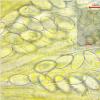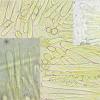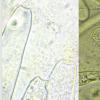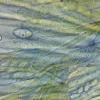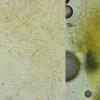
15-12-2025 15:48
 Danny Newman
Danny Newman
Melanospora cf. lagenaria on old, rotting, fallen

15-12-2025 15:54
 Johan Boonefaes
Johan Boonefaes
Unknown anamorph found on the ground in coastal sa

15-12-2025 21:11
 Hardware Tony
Hardware Tony
Small clavate hairs, negative croziers and IKI bb

15-12-2025 07:09
 Danny Newman
Danny Newman
indet. Rutstroemiaceae sp. on unk. fallen leavesMc

15-12-2025 07:05
 Danny Newman
Danny Newman
Pseudosclerococcum golindoi (det: Zotto)near Cosb

15-12-2025 11:49
 Danny Newman
Danny Newman
ITS sequences from the following two collections B

15-12-2025 12:34
 Danny Newman
Danny Newman
indet. Rhytismataceae on oak leafnear Purchase Roa

09-12-2025 12:06
 Andgelo Mombert
Andgelo Mombert
Bonjour,Je recherche l'article concernant Hypobryo
Purpureodiscus - kreiselii?
Lothar Krieglsteiner,
17-12-2024 18:50
 from Portugal, on naked soil under Quercus suber above slate-stone.
from Portugal, on naked soil under Quercus suber above slate-stone. When collecting, I strongly thought of Purpureodiscus subisabellinus but hesitated mainly because of the different ecology (I know P.s. in connection with Fraxinus-wood from different findplaces).
Under the microscope it became clear very soon that the collection is not P. subisabellinus. The recherche now led to the paper of Hirsch and his description of P. kreiselii with quite similar characters. Unfortunately, I have no access to the descriptions of P. bananincola (likely not my fungus) and P. luteorosellus - as the latter is a LeGal-species likely from Southern Europe it also could perhaps be a possibility.
I noted clavate paraphyses that are often clustered, eguttulate spores of about 17-21/9,5-11,5 µm, asci with a diffuse iodine reaction at nearly entire length and pleurorhynchous ascus-bases. I also had thought of Pachyella because of the thick ascomata, but I found no gel and no oildrops in the spores (besides the drier ecology).
Who can tell me if P. kreiselii is correct or if P. luteorosellus is perhaps a better choice.
Yours, Lothar
Nicolas VAN VOOREN,
17-12-2024 18:57

Re : Purpureodiscus - kreiselii?
Interesting, this collection deserves a sequencing to evaluate if P. kreiselii is a good species or simply a form of P. subisabellinus. The other known Purpureodiscus are excluded because they are pantropical species.
Lothar Krieglsteiner,
17-12-2024 19:07

Re : Purpureodiscus - kreiselii?
thank you for your opinion. If you want me to send the specimen please tell me.
Yours, Lothar
Yours, Lothar

